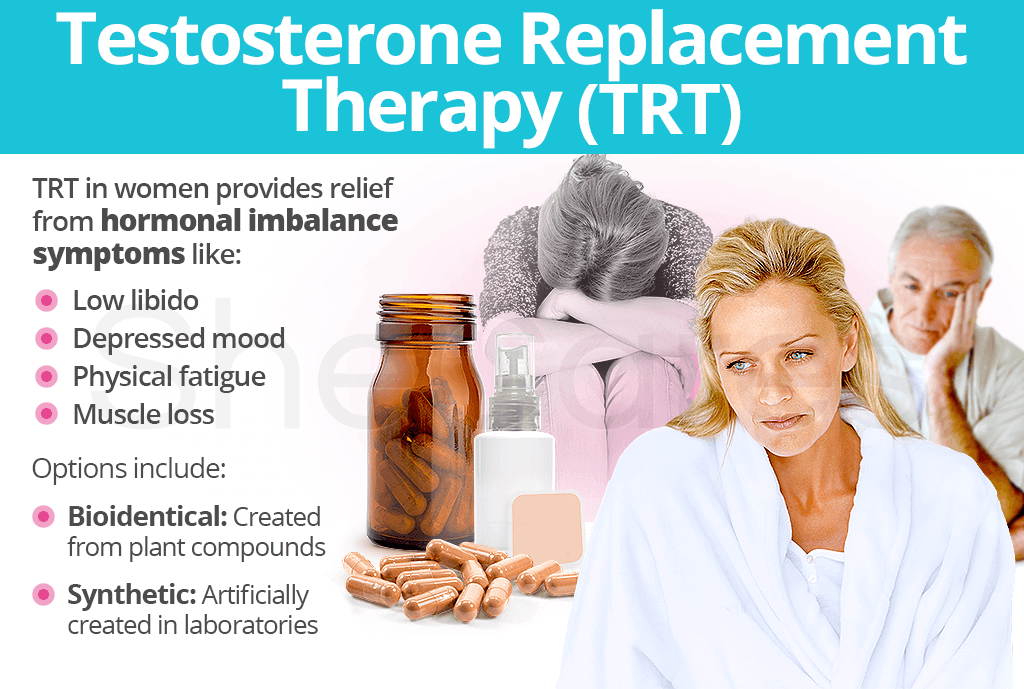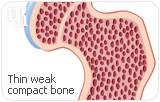Sometimes the necessary hormone required to relieve symptoms isn't the commonly prescribed estrogen or progesterone, yet none other than the infamous “male” hormone testosterone. Find out more about testosterone replacement therapy for women so you can decide if it's right for you below.
About Testosterone Replacement Therapy
As its name suggests, testosterone replacement therapy is a type of hormone replacement therapy (HRT) that introduces external testosterone into a woman's body when her levels are in deficit.
Because HRT testosterone is not FDA-approved for women, it is prescribed off-label, and its use is monitored closely to prevent adverse reactions.

Testosterone replacement treatment is taken for relief from symptoms such as:
- Low libido
- Depressed mood
- Decreased energy levels
- Insomnia
- Cognition changes
- Physical fatigue
- Muscle loss
- And more
Moreover, testosterone replacement therapy for women is divided into two options, bioidentical or synthetic, signifying the following:

- Bioidentical testosterone replacement therapy. Bioidentical testosterone, also called “natural testosterone,” is created by extracting diosgenin from plants, like yams and soy. This compound is then chemically modified into progesterone, which is then used to make bioidentical androgens such as testosterone.
- Synthetic testosterone replacement therapy. Generally, the hormones used in testosterone replacement therapy are synthetic, meaning that they are artificially created in laboratories to be structurally identical to human testosterone. Unlike bioidentical testosterone, synthetic hormones do not have natural origins.
Without a doubt, women who take testosterone for HRT should work hand in hand with their doctors throughout the process so as to personalize their treatment plans, beginning with the lowest dose necessary and raising doses if needed.
Furthermore, talk with your doctor about the possibility of pursuing compounded HRT, during which testosterone is mixed with other key hormones based on a woman's symptoms and preferences. Other hormones used generally are estrogen, progesterone, or both.
Nevertheless, to fully comprehend the scope of taking external hormones, continue reading about the side effects of testosterone replacement therapy before deciding if this is the path you want to go on for ultimate relief.
Sources
- Harvard Health Publishing. (2013). Testosterone therapy: Is it for women? Retrieved September 16, 2019, from https://www.health.harvard.edu/womens-health/testosterone-therapy-is-it-for-women
- Mayo Clinic. (2016). Testosterone therapy in women: Does it boost sex drive? Retrieved September 16, 2019, from https://www.mayoclinic.org/diseases-conditions/menopause/expert-answers/testosterone-therapy/faq-20057935
- Pattimakiel, L. & Thacker, H.L. (2011). Bioidentical hormone therapy: Clarifying the misconceptions. Cleveland Clinic Journal of Medicine, 78(12), 829-836. Retrieved September 16, 2019, from https://www.mdedge.com/ccjm/article/95466/womens-health/bioidentical-hormone-therapy-clarifying-misconceptions



